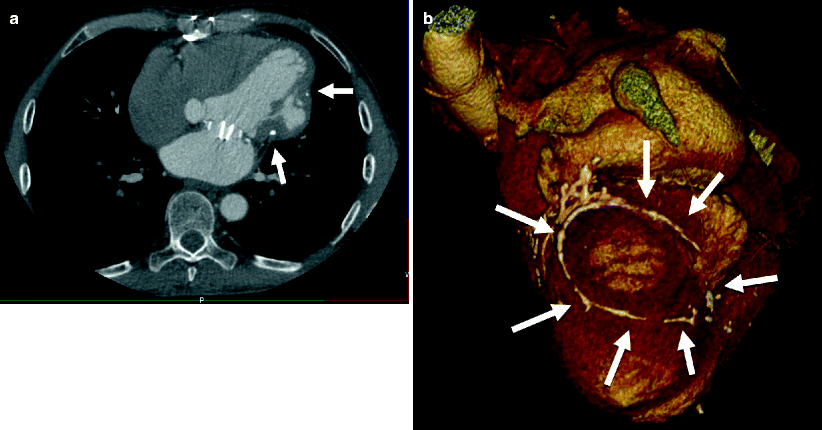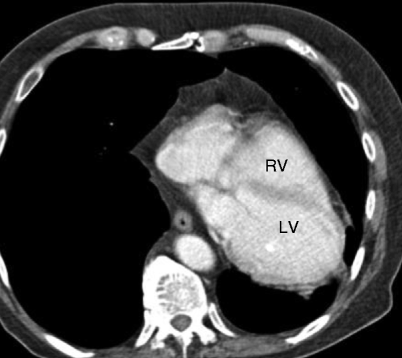, Marilyn J. Siegel2, Tomasz Miszalski-Jamka3, 4 and Robert Pelberg1
(1)
The Christ Hospital Heart and Vascular Center of Greater Cincinnati, The Lindner Center for Research and Education, Cincinnati, OH, USA
(2)
Mallinckrodt Institute of Radiology, Washington University School of Medicine, St. Louis, Missouri, USA
(3)
Department of Clinical Radiology and Imaging Diagnostics, 4th Military Hospital, Wrocław, Poland
(4)
Center for Diagnosis Prevention and Telemedicine, John Paul II Hospital, Kraków, Poland
Abstract
Congenital absence of the pericardium is an abnormality characterized by a spectrum of findings ranging from a small defect to complete absence of the pericardium.
Congenital absence of the pericardium is an abnormality characterized by a spectrum of findings ranging from a small defect to complete absence of the pericardium.
Congenital absence of the pericardium is rare with an estimated incidence of 0.0001–0.044 % based on surgical/pathologic series [1, 2].
Associated abnormalities occur in 30–50 % of patients and include atrial septal defect, patent ductus arteriosus, mitral valve stenosis, and tetralogy of Fallot [1, 2]. Pericardial defects are typically discovered incidentally during surgery, imaging, or postmortem examinations, but patients can present with non-exertional stabbing chest pain, which often is induced or relieved by postural changes [3, 4].
In healthy individuals, the aortopulmonary window contains fat and is covered by pericardium. Most pericardial defects are partial and occur on the left and less frequently on the right side or diaphragmatic surface (Figs. 33.1, 33.2, and 33.3). Left-sided absence of the pericardium allows extension of the main pulmonary artery beyond the confines of the mediastinum and interposition of lung tissue between the pulmonary artery and aorta, which is a characteristic diagnostic feature [1, 5, 6]. Occasionally, the left atrial appendage or other chambers bulge through the defect. The heart rotates to the left, resulting in levocardia.




Fig. 33.1
Partial absence of the pericardium. An example of a 54-year-old man with known tricuspid insufficiency and who underwent a computed tomography (CT) angiogram for evaluation of an abnormal chest radiograph. Panels (a) and (b) are axial CT images showing the main pulmonary artery (PA) extending far beyond the mediastinal margins into the left hemithorax. Panel (c) is an axial scan, while panel (d) is a coronal image. Both panels (c) and (d) demonstrate a leftward shift of the heart and cardiac axis, which is nearly horizontal. At this level, the pericardium is only partially visualized around the heart (panel c, arrows). Ao aorta

Fig. 33.2
Partial absence of the pericardium. Panel (a) is an axial scan in a patient with a history of a mitral valve replacement shows a focal pericardial defect resulting in herniation of a relatively small segment of the left ventricular free wall (arrows). Panel (b) is a 3D volume-rendered image showing calcification at the edges of the pericardial tissue through which the herniation occurs (arrows)

Fig. 33.3




Complete absence of the pericardium. This is an axial contrast-enhanced computed tomogram demonstrating complete absence of the pericardium and marked displacement of the heart into the left hemithorax with the cardiac apex directed posteriorly. RV right ventricle, LV left ventricle
Stay updated, free articles. Join our Telegram channel

Full access? Get Clinical Tree


